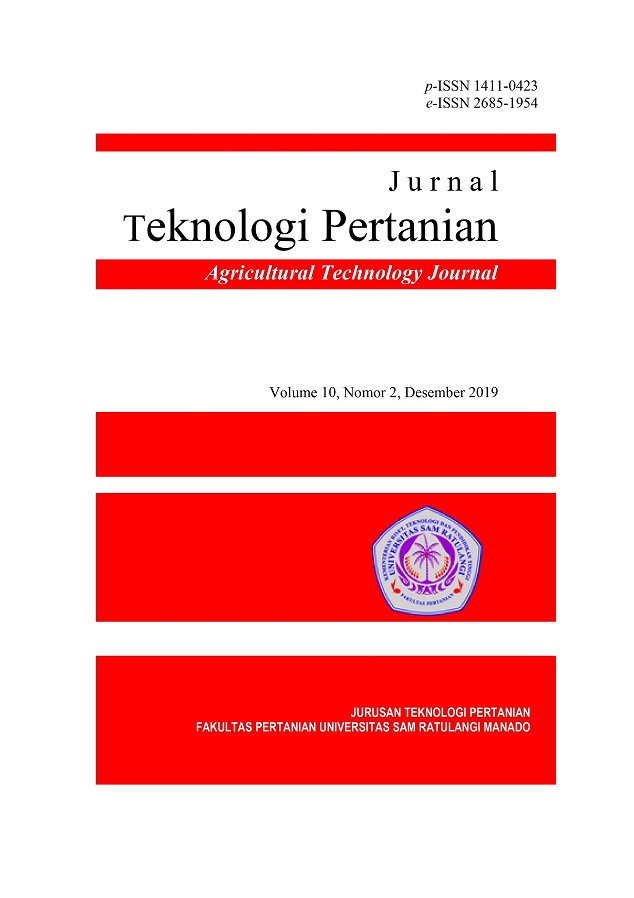PENGARUH PENAMBAHAN TEPUNG TAPIOKA DALAM PEMBUATAN BISKUIT BERBAHAN BAKU TEPUNG UBI BANGGAI (Dioscorea alata L.)
DOI:
https://doi.org/10.35791/jteta.v10i2.29117Abstract
ABSTRACT
The purpose of this study was to determine the proportion of tapioca flour that needs to be added in the manufacture of biscuits made from Banggai yam flour, based on sensory and chemical properties. This research used a Completely Randomized Design (CRD) with the addition of tapioca flour at four levels as treatments, i.e. A: 0%; B: 5%; C: 10%; D: 15%, which was triplicated. The parameters observed were organoleptic testing for the degree of preference for taste, aroma, color and texture. The chemical composition of the biscuits was analyzed and the energy value was calculated. Overall, the level of preference given by the panelists on the Banggai yam biscuits without the addition of tapioca flour was 3.68 (like) out of 5 as the highest value. It can be concluded that tapioca flour does not need to be added in making Banggai yam biscuits. Banggai yam biscuits have a hardness of 1.93 mm / g / sec. and energy value of 422.62 kkal, with the composition of 3.98% moisture, 8.13% protein, 11.10% fat, 3.68% ash, 72.55% carbohydrates, and 0.56%. crude fiber.
Â
Keywords: Banggai yam, tapioca flour, biscuits







